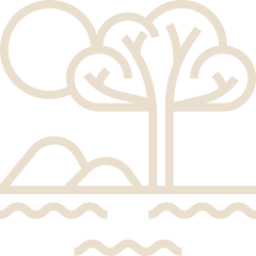Scientific Inquiry in the USA: A Comprehensive Overview
The United States has long been a beacon for scientific exploration, producing a myriad of innovations and breakthroughs that have catalyzed global progress. Central to this is the enduring spirit of scientific inquiry, which drives individuals and institutions alike to seek knowledge and understanding. As we traverse the rich landscape of American scientific endeavors, from the early days of the scientific revolution to present times, it becomes evident how deeply rooted the principles of systematic observation and experimentation are in the country’s fabric.
An Introduction to American Scientific Research
The history of scientific advancements in the USA is intertwined with global milestones. What was the scientific revolution? It was a period, primarily between the 16th and 18th centuries, which saw a seismic shift in how people perceived the world. This was when fundamental principles, like scientific law, were established, laying the groundwork for subsequent discoveries. American scientists, inspired by this global movement, embarked on their own quests, leading to a tradition of inquiry that has continually evolved and expanded. Various online platforms like essayservice.com offer anonymous essay writing assistance, where professional essay writer online help craft original compositions, easing students’ academic burdens and enhancing their learning experience with tailored, educational support.
Pioneering Laboratories Across the USA
From coast to coast, the USA houses a multitude of institutions dedicated to various branches of science:

The Broad Institute delves deep into genomics, producing scientific reports that have illuminated our understanding of DNA.

The Salk Institute pioneers biological studies, its research often transforming into scientific law.

The Jet Propulsion Laboratory propels us into the cosmos, aligning with the astronomical wonders uncovered during the scientific revolution.

And The Smithsonian Institution, a testament to the nexus of art and science, curates a blend of anthropological and artistic marvels.
Modern Luminaries: The Scientists Shaping Today's World
A new age demands new thinkers. Dr. Jennifer Doudna’s work on CRISPR showcases the quintessence of scientific inquiry, while Dr. Kizzmekia Corbett’s contributions to vaccine research are encapsulated in numerous scientific reports that guide global health policies. Dr. Neil deGrasse Tyson, with his passion for astrophysics and knack for scientific management, bridges the divide between complex concepts and public understanding.
Imagine a scenario where a student, overwhelmed by numerous deadlines, turns to an essay service with a plea: “Can you write my assignment?” The response is affirmative, a beacon of hope in a sea of academic challenges. These services are not just about writing; they are about understanding the unique needs of each student, ensuring that each “write my assignment” request is met with a tailored approach.


Financial Backing: Sustaining America’s Scientific Engine
Research isn’t merely driven by curiosity; it requires substantial funding. Government grants, as established mechanisms of scientific management, have traditionally played a pivotal role. But the landscape is vast. Philanthropic endeavors, epitomized by individuals like Bill Gates, fuel innovations, while the private sector, with its penchant for scientific reports to back investment decisions, continually injects capital into promising research projects.
When exploring essay services, one must consider several factors, such as quality, reliability, and cost-effectiveness. This is where writemyessays reviews come into play, offering detailed analyses and user experiences that aid in making informed decisions. These reviews delve into the proficiency of writers, the adherence to deadlines, and the overall customer experience.
The Nexus of Art and Science in the USA
Marrying art with science is more than an aesthetic endeavor. It’s a mode of scientific inquiry that provides fresh perspectives. The symbiosis elucidates phenomena that might otherwise remain opaque. Art, for instance, might vividly depict what is a scientific theory through visual representation, making complex ideas palpable.
The versatility of PaperWriter extends beyond just writing; it’s also a valuable resource for students seeking to improve their own writing skills. Through detailed feedback and constructive criticism, PaperWriter helps students identify their strengths and weaknesses in writing. This approach not only helps in producing a high-quality essay but also equips students with the skills and confidence to tackle future writing tasks on their own.


The Future: Prospects of Scientific Advancement
Emerging sectors like Quantum computing, AI research, and bioengineering beckon a future rife with possibilities. As we stand on the precipice of a new era, questions arise: What is scientific notation? It’s a system to express very large or small numbers succinctly, often used in fields like astrophysics. What is scientific method? It’s the systematic procedure of hypothesizing, experimenting, and drawing conclusions – a testament to the structured approach that has fueled past discoveries and will undoubtedly shape those of the future. With tools like scientific notation examples at their disposal, American scientists are poised to unravel the mysteries of the universe.
Challenges and Hurdles in Scientific Research
The road to discovery is fraught with challenges. Ethical conundrums, especially in areas like gene editing, demand a reevaluation of what is a scientific theory and its implications. The competition for funding, exacerbated by sometimes opaque scientific management practices, influences research trajectories. And the “brain drain” phenomenon, where talent gravitates towards more lucrative opportunities abroad, poses a significant challenge.

Join the Conversation: Engaging with American Scientific Community
Now, more than ever, there’s a clarion call for engagement. Students, young professionals, and even the layperson can contribute to the discourse. Whether it’s by understanding scientific notation examples or by actively participating in symposiums that demystify what is scientific method, the avenues are manifold. At the heart of it all lies the foundational question – what was the scientific revolution? It was the spark that ignited centuries of inquiry, and its spirit continues to guide the USA’s scientific journey.